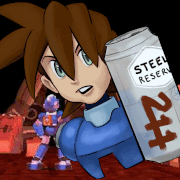|
Revol posted:I also just want to make sure you realize that "Prusa i3" you linked is a clone of the true Prusa i3. It is a very commonly cloned machine, some worse than others. And as others have said, I don't trust either of these that you linked. Monoprice is expanding into Europe, though.
|
|
|
|

|
| # ? Jun 11, 2024 18:37 |
|
Sagebrush posted:3D printing stuff focuses on reducing mass in order to achieve high speeds and quick acceleration. Even a conservative feedrate on an average printer (40-50mm/s) would be considered very high in subtractive machining, and the printer will have to accelerate and decelerate to those figures hundreds of times a minute. Uhhh. You haven't looked up anything to do with high speed machining, or even CNC rapid movements, have you. I'm looking at a couple videos of vertical machining centers cutting at around 300mm/sec with a different cutter strategy... the limitation in speed with traditional stuff is in the cutter horsepower available, not the motion platform. When you can throw about an order of magnitude more torque at things and about 4x the RPM, it kinda seems like some of the optimizations change compared to steppers.
|
|
|
|
Monoprice has a UK site now, they show their maker select for £300, the maker ultimate for £790, seeker mini and select plus coming soon. You can also get a real prusa i3 for under £600.
|
|
|
|
mekilljoydammit posted:Uhhh. You haven't looked up anything to do with high speed machining, or even CNC rapid movements, have you. I'm looking at a couple videos of vertical machining centers cutting at around 300mm/sec with a different cutter strategy... the limitation in speed with traditional stuff is in the cutter horsepower available, not the motion platform. You're trying to reinvent the wheel without fully understanding what wheels do. CNC machines deal with cutting forces, 3D printers don't. There's a reason that 3d printers don't look like cnc mills mechanically, and you're assuming it's because people who've designed the printers aren't as enlightened as you.
|
|
|
|
I figured the Amazon ones were too cheap. I could stretch to $300 which is around £230 but that wouldn't cover import fees or taxes. The Wanhao i3 mini is exactly that much but I'd like something that can print larger than 175mm as a minimum. I have a few ideas for modular designs on 6” pieces so an extra 1” overlapping connection would be the minimum for strength. I'll just wait and see what monoprice has to offer when they get more models in stock over here.
|
|
|
|
mekilljoydammit posted:Uhhh. You haven't looked up anything to do with high speed machining, or even CNC rapid movements, have you. I'm looking at a couple videos of vertical machining centers cutting at around 300mm/sec with a different cutter strategy... the limitation in speed with traditional stuff is in the cutter horsepower available, not the motion platform. Okay, sure, go and look up how much a CNC mill cutting 300mm/s in even a soft material like aluminum is gonna run you. In fact, just look up the price of one of the axis motors. Or the 50,000 RPM spindle you need to hit those numbers. If you want to jack off about high-end industrial CNC equipment, go nuts. If you want to "throw an order of magnitude more torque" at your 3D printer extruder head which requires approximately zero torque to move, go nuts. Suffice it to say that there actually is a good reason printers don't use giant servomotors and ballscrews, and it's not because no one ever thought of it until now.
|
|
|
|
Verizian posted:I figured the Amazon ones were too cheap. I could stretch to $300 which is around £230 but that wouldn't cover import fees or taxes. The monoprice maker select I mentioned is £300 with an 8"x8"x7"volume, it's in stock now. https://www.monoprice.uk/products/monoprice-maker-select-3d-printer-v2-1-uk
|
|
|
|
rawrr posted:You're trying to reinvent the wheel without fully understanding what wheels do. CNC machines deal with cutting forces, 3D printers don't. Two things really. 1, I'm looking at rather longer belt runs than normal (so yay dealing with accelerating all that around) and while probably more moving mass than a CoreXY, I'd wager still less than some bigger Prusa-style moving bed setups. I'm not talking about making the whole thing out of cast iron or even steel weldments. Well, maybe for the frame.  2, A lot of the existing printer optimizations are largely driven by the fact that they're using steppers, because industrial servodrives are expensive, and there isn't been a low cost alternative. You need something that moves a good linear distance per motor RPM because you can't make steppers turn very fast, and you need to optimize everything for lightness because you can't have very much torque out of steppers, because bigger ones go even slower, and besides which there's a limit to how much power the small timing belts will take. It's not a very complicated wheel. And yes there's not much in the way of forces on the hot end, and yes, there's other ways around it, but I feel like solving it by screwing around with BLDC servos. Sagebrush posted:Okay, sure, go and look up how much a CNC mill cutting 300mm/s in even a soft material like aluminum is gonna run you. In fact, just look up the price of one of the axis motors. Or the 50,000 RPM spindle you need to hit those numbers. ... or look up how much fast rapid traverses on basically anything are going, which is more of an indication of the capability of the motion platform, which is what we're actually talking about? *additional edit* And I have been looking up how much servodrives and so on and so forth go for (albeit for VMC poo poo) - which is why I got really really loving excited to see that there's cheap alternatives that people are working on that might work. Look, this whole thing is pretty far outside the normal "let's optimize towards tiny layers and fine detail" box. mekilljoydammit fucked around with this message at 22:06 on Oct 9, 2017 |
|
|
|
mekilljoydammit posted:I'm an engineer for my sins... I've been messing with figuring out a nice stable, reliable 600mm cube printer and to be quite honest, ball screws and servos seems like a much better idea than belts, no matter how cleverly configured. A lot of 3d printing stuff seems to go towards minimizing mass to cut down on dynamic effects of stuff moving around, whereas "real" CNC stuff seems to all go towards increasing mass to increase stiffness... and I think a lot of that is just because 3d printing stuff tends to be power limited because of steppers.
|
|
|
|
peepsalot posted:You know, if you think the typical NEMA17 stepper driven axis on a 3d printer is underpowered, that there exist larger and more powerful stepper motors, like NEMA 23 or NEMA 34? ... you're missing the point. Fundamentally, I think most 3d printer setups are really floppy, which especially shows up when you start scaling them up. If you add mass to increase stiffness, for a given motor, you start getting compromised on acceleration - torque vs mass, pretty simple. If you put bigger steppers on, you compromise on maximum speed. The best way out of this for steppers is reducing mass and living with less stiffness. Belts are a similar sort of thing - ball screws are stiffer but if you are limited on motor RPM (which steppers really really are) they don't work worth a drat. My end goal for this printer is something to do casting patterns with, ideally with a pellet based extruder (woo, more controversy) - I have other printers to do little stuff with fine detail which, yes, are stepper/belt driven and are perfectly fine at that scale.
|
|
|
|
mekilljoydammit posted:... you're missing the point. Big print need more oomph, makes sense.
|
|
|
|
EVIL Gibson posted:This thing is on my desk now after things went bad a month ago Goes to show why never trust a printer until you get the settings bang on. Even then, watch the first two layers at least. Sorry to see that, what happened? I've never had this kind of issue. When I have print failures, I get spaghetti, not blobbed up hotends. I see this often enough on r/3dprinting, but never understood why it happens.
|
|
|
|
Revol posted:Sorry to see that, what happened? I've never had this kind of issue. When I have print failures, I get spaghetti, not blobbed up hotends. I see this often enough on r/3dprinting, but never understood why it happens. Sometime a print detaches from the bed and sticks to the heating block or something and the nozzle keeps spooting out plastic and it just cascades and gets worse
|
|
|
|
cakesmith handyman posted:The monoprice maker select I mentioned is £300 with an 8"x8"x7"volume, it's in stock now. Yeah I saw that one but £300 is very different from $300, it's closer to $400. I can stretch to between £200-£230 at most right now so I'll wait.
|
|
|
|
EVIL Gibson posted:This thing is on my desk now after things went bad a month ago Goes to show why never trust a printer until you get the settings bang on. Even then, watch the first two layers at least. Millions of years from now, scientists will successfully clone your hot end using the material they find embedded in that blob of amber. Jurassic Parts.
|
|
|
|
Revol posted:Sorry to see that, what happened? I've never had this kind of issue. When I have print failures, I get spaghetti, not blobbed up hotends. I see this often enough on r/3dprinting, but never understood why it happens. That is what happens if you walk away without at least watching the 1st layer to make sure initial bed adhesion is working like it should. Spaghetti = bed adhesion failed partway thru print. Blob = bed adhesion failed basically at the start of the print.
|
|
|
|
biracial bear for uncut posted:That is what happens if you walk away without at least watching the 1st layer to make sure initial bed adhesion is working like it should. Actually not true in this case. Even though the extrusion was creating a really messy 1st and 2nd layer, once it got to the fourth layer and started making infill it got better. I left the room after it got to layer 15 or so. The model was still connected but there were snotlings hanging off the remains of the model which showed it was was picking up extra plastic due to lack of retraction/too hot temps and carried boogers on the side of the nozzle. I think a nozzle booger hit a cooled down snotlings and crashed into and buried itself in. It broke off at a layer midway down (I think about 50 layers up) and just carried it's blob trophy all around just injecting filament into it. I put down a 2 mm skirt down on the bottom and in combination with the hair spray and ~90c hotbed temps, pulling the first few layers off the glass only happens when there is barely any significant contact to the bottom (which I always adjust the model to print with as much bed contact as possible). EVIL Gibson fucked around with this message at 04:04 on Oct 10, 2017 |
|
|
|
food court bailiff posted:[a bunch of words about a cylinder with the following shape cut out being printed with some gnarly internal strings] This is still happening to my print. It's always stringing from the same point - I tried printing it on a different part of the print bed just to rule out some kind of weird mechanically influenced thing, so I'm pretty sure at this point that it's the slicer. Ugh.
|
|
|
|
  I didn't want to swap nozzles to print it finer, so I made an infinity pyramid at 0.5mm. Weird to print something that isn't a drone part.
|
|
|
|
I have a stupid big print that is support dense so I've triples the support material because gently caress babying a 30 hour print.
|
|
|
|
Verizian posted:Yeah I saw that one but £300 is very different from $300, it's closer to $400. I can stretch to between £200-£230 at most right now so I'll wait. Hey, im a UK goon too, the amazon kossel you posted is identical to the printer i bought for much less from Gearbest (£138 inc shipping) https://www.gearbest.com/3d-printers-3d-printer-kits/pp_640021.html You can check my post history in this thread for example of what I have been able to print. But there are some caveats, no heated bed (PLA printing only basically) and Delta printers can be a pain to level (I levelled mine using the adjustment screws and it works well) plus you end up with a circular platform.
|
|
|
|
Makes a cool floating glasses holder 
|
|
|
|
Welp, the homing sensors on the Mini Delta have stopped working. I've sent in an email to Monoprice support and pinged the Monoprice Rep that is monitoring the FB group, but at this point the printer is basically dead-in-the-water. Can't do anything if the machine cannot home itself.
|
|
|
|
bring back old gbs posted:Makes a cool floating glasses holder I think I will make one of these as well, also with my Volcano. Did you scale the model at all?
|
|
|
|
I tried it doing 0.2 layer height with my 0.8 nozzle and I was very surprised how good it looks. And the speed. I was considering dropping back to a 0.4 nozzle but I don't think I will now. Too much hassle and the z-axis corners are quite acceptable imo
|
|
|
|
mekilljoydammit posted:... you're missing the point. What tolerances do you need your casting patterns to hit? Even a custom and carefully-built FDM machine might not be appropriate. You might try googling blogposts/hackaday for attempts to cast resin prints. I'm an engineer too, and as you've noticed everything about the FDM space is built for budget. I'd suspect the way through the stepper speed dilemma is linear, permanent magnet DC motors and closed loop control. But printer control boards currently are not realtime, the firmware isn't written for servos. I'm watching the Smoothie project closely, because they're transitioning their ARM board to a realtime OS. Maybe that will be the foundation of solution. As for pellet extrusion, perhaps be humbled that you are not the first engineer to think of it, but if you were to release a full pellet extrusion system tomorrow for home use, you would be first to market. It's a hard project, but is definitely the future of FDM, because it can transfer much more hydraulic energy into the melt stream than the hot ends of today. That energy could be used for fine extrusion, shearing the highly viscous melt stream for mixing, devolatilization, higher flow rates, with high temperature valving, since the energy is transferred to the melt far upstream of the nozzle, it could be used to switch nozzle diameters mid print, and with that, combination print and injection molding, true watertightness, better overhangs, more area to monitor melt temperature for tighter process control... all the engineers who've looked at it recognize the advantages, so I'll repeat: be humbled by the problem. If you read all this and still want to build your own machine, for inspiration, take a look at: Precision Machine Design by Alexander Slocum Design Principles of Metal-Cutting Tools by Koenigsburger (I love this book) Exact Constraint by Blanding All are up on libgen. Good luck!
|
|
|
|
Sagebrush posted:I think I will make one of these as well, also with my Volcano. Did you scale the model at all? Yeah I used the pyramid4.stl file and scaled it from 1 to 3.
|
|
|
|
I've finally got my dual extruders calibrated relative to each other and printing fairly successfully, but now I'm seeing the HIPS raft start to lift up from the print bed, as in the attached image. I haven't had the raft completely detach, but of course that's my concern. In addition to this corner I can see a couple other spots where the raft "bubbles" up. It doesn't happen where there are other layers printed onto the raft (supports, ooze shield). Any idea what's causing this?
|
|
|
|
Listerine posted:I've finally got my dual extruders calibrated relative to each other and printing fairly successfully, but now I'm seeing the HIPS raft start to lift up from the print bed, as in the attached image. I haven't had the raft completely detach, but of course that's my concern. In addition to this corner I can see a couple other spots where the raft "bubbles" up. It doesn't happen where there are other layers printed onto the raft (supports, ooze shield). Any idea what's causing this?
|
|
|
|
Mofabio posted:What tolerances do you need your casting patterns to hit? Even a custom and carefully-built FDM machine might not be appropriate. You might try googling blogposts/hackaday for attempts to cast resin prints. For basically all of my purposes, I'm looking in terms of automotive castings - the intent being that the dimensionally critical stuff is going to be finish machined anyway. One of the specifics is transmission bellhousings - so there's a couple finish machined surfaces, but no actual details smaller than around a quarter inch. Something where I could make core boxes and everything out of wood if I were better at woodworking.  Likewise cylinder heads, which is probably the most detailed I'm looking at ... if the as-printed surface is slightly rough, I can use other methods to finish it and the benefit of spitting out all the patterns and core boxes in close to the right shape outweighs the extra time. Likewise cylinder heads, which is probably the most detailed I'm looking at ... if the as-printed surface is slightly rough, I can use other methods to finish it and the benefit of spitting out all the patterns and core boxes in close to the right shape outweighs the extra time.And you've basically hit it with the "budget" aspect - the race for consumer 3d printers seems towards fine resolution and cheapness, not necessarily in that order. I'm looking at what's frankly a kludgey solution - there's a bunch of the brushless dc servo controllers that can accept the same sort of step plus direction signals that stepper drivers work off of. It loses me the ultimate potential of good closed loop control but who knows. I know I'm still cutting a lot of corners on budget. I've come across a more than few attempts at pellet extrusion; I don't have the link handy but some of them seemed fairly well thought out. It's definitely not a solved problem, I realize, but even if it doesn't work any better than filament extruders, being able to feed the thing from a giant hopper of pellets instead of continuous spools is a potentially huge quality of life thing. Thank you for the reading tips - you might have guessed that part of this is an excuse to delve into learning about proper motion systems. I'm hoping to buy a used vertical machining center in the next few years for home use and would really like a cheap(er) thing to learn some concepts on before I'm trying to refit a 5+ ton piece of precision iron.
|
|
|
|
mekilljoydammit posted:I've come across a more than few attempts at pellet extrusion; I don't have the link handy but some of them seemed fairly well thought out. It's definitely not a solved problem, I realize, but even if it doesn't work any better than filament extruders, being able to feed the thing from a giant hopper of pellets instead of continuous spools is a potentially huge quality of life thing. Would love to see those pellet extrusion links if you do recover them. I followed news on the David/Sculptify Kickstarter, but with no updates in 3 years, it appears to have been a scam. Precision melt metering at high, even pressures, with fast on/off, from the last time I did a patent search on it, looked like the engineering focus. That was a while ago, though. I'm not a car guy, but looking at a transmission bellhousing, it looks like there are multiple sealing surfaces, and fixtures along x and y (z being the shaft) that need relative distances to be good to <1mm. For cheap motion control on consumer printers there are some worst-case scenarios. 100mm on X won't be exactly 100mm on Y, and neither will be exactly 100mm. So you'll have oval runout and the bolt locations won't be precisely spaced. Along the z print dimension, don't assume parallelism for the top and bottom layers, especially without 3-point bed leveling. Surfaces will also be rough, so any destined for gaskets will need machining. Hm, there might be others. Make sure to inspect the part and iterate! Please don't take any of this as discouragement, because I think the basic idea of printed mold -> casting -> final machining is sound. Go through with it, take a lot of pics, and post em! I'm gradually learning motion control from a desktop lathe CNC retrofit, and to a lesser extent a very DIY Mendel90. I've basically replaced everything on the lathe except the spindle, bed, carriage, and tailstock at this point. Sometimes twice -- can't believe I've been so dumb so often. Such a fun project though. If you buy some old iron you're in for a treat. Good luck in your endeavors.
|
|
|
|
Mofabio posted:Would love to see those pellet extrusion links if you do recover them. I followed news on the David/Sculptify Kickstarter, but with no updates in 3 years, it appears to have been a scam. Precision melt metering at high, even pressures, with fast on/off, from the last time I did a patent search on it, looked like the engineering focus. That was a while ago, though. https://mahorxyz.wordpress.com/2016/05/13/pellet-extruder/ is the most promising looking one I've found. I emphasize "promising looking" - I don't have a motion platform that would really handle that mass. You're about right on the tolerance of the final locations, but how it's conventionally done is that hole locations aren't even cast, or are cast with a lot of extra material. I actually have an old Bridgeport mill and South Bend lathe sitting around and I know how to use them, though like I said I hope to move up to a big boy CNC. Modern sand casting can be very good tolerances, but I won't pretend I'm that I'm ever going to be to the point of competing with professional foundries as far as precision control. Actually did a round of 3d printed pattern -> investment cast things last winter for a secret santa, one of them is here. Only finish machining was the threads for the gearstick. For the big printer I'm not looking for that level of detail since it'll be a different casting process anyway. 
|
|
|
|
Oh that's badass. Re: pellet extruder, wow that's really cool, appreciate the link, didn't realize the state of the art was so advanced. I'm surprised at how comparable his results are to a standard hotend. Typical L/D for extruder screws is like 20, his looks like 5. He's also going to get pressure fluctuation both because of the short screw and because it's cooked into the design of those things, but, judging from his prints it doesn't appear to have made a visual impact. Very cool stuff. He's using non-virgin pellets, and I kind of wonder about hisses and pops from volatiles, because I didn't see a dedicated space to off-gas (maybe the short screw allows gas backflow?) If this is a problem you want to tackle, the best resource I've found so far is Rauwendaal's Polymer Extrusion 2e. It's a very well laid out book and has force and energy balances for bottom-up screw design, as well as hard-won empirical wisdom. I found it in hardcover for <$10 on Amazon, but I think it's also on libgen. Makes sense about the casting, looks like you already know what you're in for, sorry for man-splaining it :P.
|
|
|
|
Heck, no worries; on the internet nobody knows if you have any clue whatsoever. I'm focused on test engineering and engine development but have sorta been trying to bootstrap my own (very small production volume) manufacturing for the last 10 years or so. I know some stuff, don't know some other stuff, and mostly have an idea of the differences. Polymer extrusion is 100% not my area of expertise, for example... casting and the rest I have some knowledge and some experience but know I'm still learning. Incidentally, libgen is my favorite thing I've learned about today.
|
|
|
|
EVIL Gibson posted:I thought it was just basic curl, but is the lowest layer of the green bit under the tent supposed to be the on the same level as where the brown perimeter is supposed to be and the curl is just that extreme? The hole is letting you see under the corner of the raft that has risen up. The faint pink line is the first layer of ABS that was printed on the ooze shield. It should be 1 layer above the 1 layer thick raft, which should be sitting flat on the print bed. So if you look through the hole, that edge of green is the HIPS plastic at the base of the first line of supports. This is my third attempt for this print; a layer shift killed my first attempt, second attempt ended prematurely when a Windows update restarted the computer running the printer. The raft is coming up from the print bed every time at this specific corner.
|
|
|
|
mekilljoydammit posted:... you're missing the point. I think you'll be sacrificing a lot of precision if you go with those RC hobby motors, all for some speed that you won't actually be able to use except for non-printing travel moves(that's nice and all but not going to significantly improve your print times by itself) Have fun paying an order of magnitude more for your drivetrain just to find that extrusion limit though.
|
|
|
|
peepsalot posted:I think you'll find that in general, there is a speed limit to extrusion, (a speed limit well within the range of cheap stepper motors), where exceeding that speed causes a significant loss in adhesion to the previous layer. OK, you know steps per mm? My main printer is at, off the top of my head, something like 80 steps per mm. A 2mm pitch ball screw with the same steppers/drivers/settings/etc would be 1600 steps per mm. Or if you prefer, 40mm per revolution vs 2mm per revolution. I mean poo poo, I can do math - with the intended nozzle diameter, I need more than 50 watts to break 70mm/sec on prints.
|
|
|
|
mekilljoydammit posted:A 2mm pitch ball screw with the same steppers/drivers/settings/etc would be 1600 steps per mm.
|
|
|
|
The thing about theoretical machine builds that I've noticed is that they mostly stay theoretical.
|
|
|
|

|
| # ? Jun 11, 2024 18:37 |
|
Tres Burritos posted:The thing about theoretical machine builds that I've noticed is that they mostly stay theoretical. Yeah  But how strange the world would be if we had more prototypes than ideas! But how strange the world would be if we had more prototypes than ideas!
|
|
|























